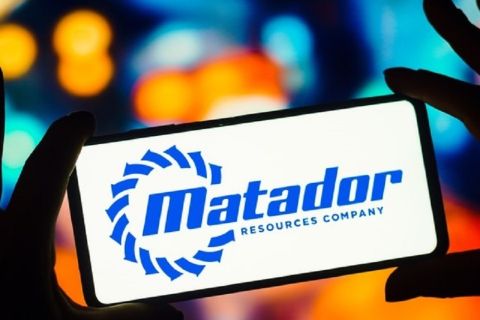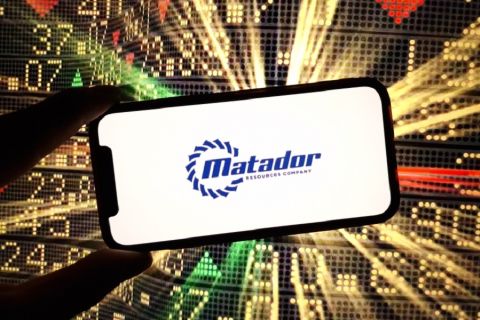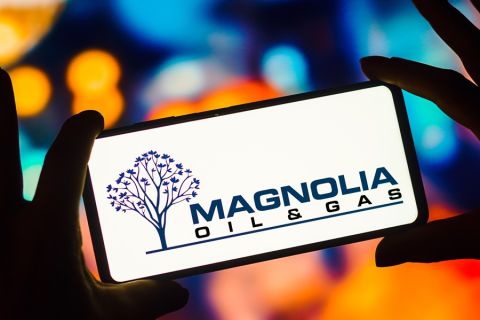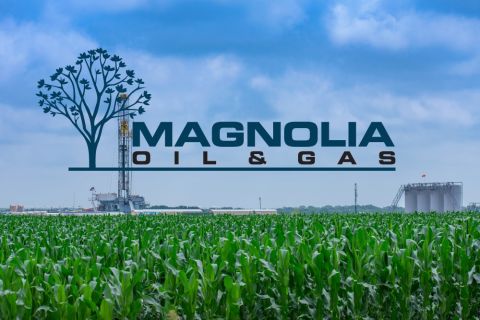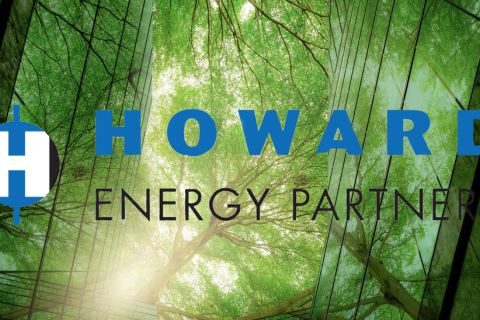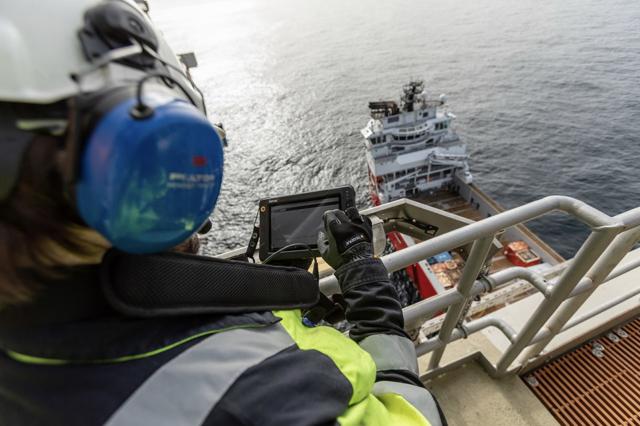
Armed with operational data, Framo has entered into the first performance-based contract on the Norwegian Continental Shelf with operator Aker BP. (Source: Cognite)
Unprecedented events have collided in a manner that all but ensure a formative transformation in an industry that's 160 years old. A price war, a global pandemic—the likes of which hasn’t been seen in a century—plummeting demand, a shrinking workforce, and prices so low to force a widespread suspension of production around the world like Brazil, Africa and Canada, and more shut-ins are sure to follow.
It’s a situation that has industry executives and analysts alike in disbelief. A situation where Big Oils will consolidate the best assets in the industry and will shed the worst ... when the industry emerges from this downturn, there will be fewer companies of higher asset quality, but the capital constraints will remain, according to Goldman Sachs’ “The Oil Industry Will Never Be The Same After Coronavirus” report released in March.
We are in uncharted waters and the future does not promise a return to the status quo. While we can be sure things will improve and go back to ‘normal’, the normal of the future will likely look different from the normal of the past. Nothing is certain, and there seems to be general agreement that decline in demand is a trend, not only a response to extraordinary circumstances.
In a world of fewer companies of higher asset quality and capital constraints, operators must find a better, more effective, more efficient, and more sustainable way. The answer no longer lies underground, it can be found in the cloud and throughout the wires that connect the complex operations of production and processing facilities.
While the oil and gas industry has historically invested in the best conventional technology possible, McKinsey benchmarks indicate that the typical offshore platform, for example, runs at approximately 77%of maximum production potential. Industry-wide, this shortfall represents something in the order of 10 million barrels per day, or $200 billion in annual revenue.
Many of the challenges in these areas stem from the complexity of production and processing facilities. With thousands of operational sensors feeding data hubs from downhole, subsurface, and topside equipment, crews working on an oil platform have millions of data points to consider while operating and maintaining. Most legacy systems on those rigs silo data and information critical for operations, maintenance, investment, and efficiency decisions. In order to turn this tide, the industry should turn to a reliable, though perhaps under-recognized ally: digital technology driven by open, accessible data.
Whether in exploration, field development, or drilling, digital technology powered by open data can help the upstream industry access and contextualize big data and scalable computing power to make trustworthy time- and cost-saving decisions. Those companies which are determined to survive this crisis and thrive in a new world must continue to digitalize operations with urgency. To raise performance efficiency, adjust to a shrinking workforce, and improve sustainability, operators must embrace today’s powerful tools that use a combination of state-of-the-art engineering, data science, and computing power to identify the best solutions to complex production optimization problems. The best of these tools incorporate conventional and physics-based models of oil and gas asset operations, filling in the performance gaps that hold back efficient production.
With the right technology and software, the oil and gas sector can realistically avoid repetitive tasks, remove human biases, reduce processing time, enhance collaboration, and empower workers to become innovators.
Maintenance Efficiency
Whether onshore or offshore, oil and gas installations are immensely complicated structures of interconnected components. Seasoned field workers may know the installation like the back of their hand, but knowing the exact location of every single piece of equipment on an installation is impossible.
When field workers conduct scheduled maintenance, they normally print out a list containing only equipment tags and the general area of the installation in which the equipment is located. The lack of detailed information about each component’s specific location means that workers spend more of their time searching for the equipment than they do inspecting it. As a result, maintenance sessions stretch for much longer than they need to, increasing the time workers spend in potentially hazardous conditions.
Aker BP fed information about its installations Ivar Aasen, Skarv, and Valhall into Cognite’s Cognite Data Fusion (CDF). CDF contextualized the information, connecting data from sensors and other sources to equipment tags, and the equipment tags to 3D models of the installations.
The 3D models are viewable in Asset Data Insight and Operation Support, applications for computers and smart devices that consume data from CDF. In Operation Support, field workers can look up an equipment tag and subsequently see an 8-by-8 meter visualization of the area surrounding the equipment. This enables field workers to quickly situate the equipment in its surroundings, reducing the time it takes to locate it in the real world.
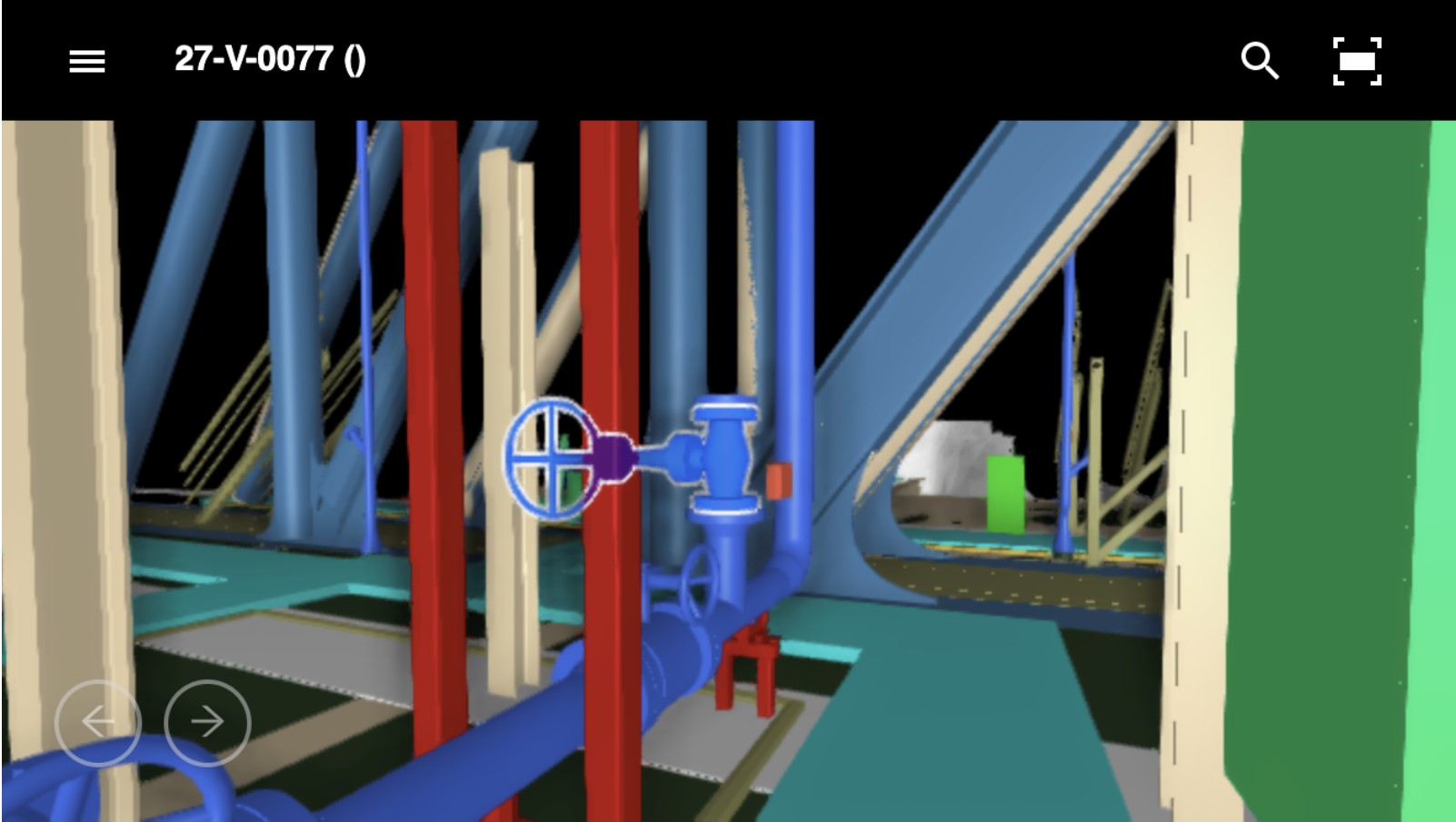
By making 3D models of installations available to field workers, operators can significantly reduce the time needed to conduct maintenance, saving time and money. In one example, an electrician on the Skarv installation spent less than two hours to complete a maintenance session that was estimated to take eight hours. With this, field workers have access to real-time data from the same interface, like pressure or temperature information critical for safe operations. They are notified of hazards, events and other ongoing maintenance tasks in real time in the 3D model.
Updating Operations
Traditional industrial infrastructure has limited supplier relationships to a transactional format. The results include static reporting, uninformed maintenance schedules, and a waste of money and resources on both sides.
Framo is a global OEM providing pumps to the marine industry. Historically, it has been unable to access or leverage operational data for oil and gas. Data has only been made available for sporadic projects linked to specific, isolated events, such as equipment failure. If Framo were to have access to its clients’ industrial data, past and real-time, it would gain the knowledge needed to improve and innovate on its existing products and services.
Working closely with Aker BP, Framo utilized Cognite Data Fusion (CDF) to access Aker BP’s industrial data. With API access to CDF, Framo was able to inform its product development. Integrating with Aker BP’s ERM system, it could set work orders and enable a feedback loop with design and engineering. When receiving live data from their equipment, Framo was able to move to performance based contracts that only triggered repairs based on the condition of the equipment, developing and launching more effective, service-based models informed by real-time data. In addition, Framo is also offering advice on pump operations to minimize energy consumption and environmental impact.
Now that real-time data is instantly available, users can experiment with advanced analytics and machine learning to deliver an improved performance and new products. This new way of working lays a foundation for redefined business models, allowing OEMs to move from selling equipment to service-based offerings.
More recently, in the midst of shelter in place regulations throughout Europe, project engineers from Framo reported the ability to monitor the condition of the seawater lift pumps at the Aker BP-operated platforms from home.
Due to the digital collaboration with Aker BP and Cognite, Framo engineers have control without having to visit the platform in the North Sea. Instead, they use live data, machine learning, and algorithms. The ongoing situation emphasizes the need to rethink and explore the possibilities for remote monitoring.
Sustainability
Globally, governments have cracked down on carbon emissions and many oil and gas companies have taken measures toward greater transparency regarding their operations. Pioneer Natural Resources Co. published its first sustainability report in 2017, while Exxon Mobil Corp. has announced plans to release its own such report. This is a trend in the industry.
In Europe, Aker BP’s Norwegian pilot program is driven by a digital platform that calculates and identifies energy loss related to oil rig components shows that simply reducing pressure and energy use during a cleaning process could reduce emissions by more than 15 million kilogram (kg) of CO2. These emissions reductions would have been impossible to find without the digital platform that was driven by open, accessible data.
If one were to extrapolate these findings across an operator’s oil and gas assets, a generalized reduction of more than 10% in energy is well within reach, and that would amount to upwards of 13 billion kg less CO2 per year, largely driven by a handful of engineers. This is the same as the CO2 output of 40 million to 80 million cars and will enable the operator to achieve its ambitious emissions reduction goals in the next decade.
These projects are helping operators assess and maintain critical functions more safely and efficiently, cutting operational and maintenance costs, improving vendor relations and driving new business models that benefit the operators. This then enables remote monitoring and cuts emissions on a level equivalent to millions of automobiles per year. Imagine these projects being scaled across the industry.
Adapting to Survive
As the world changes at an unprecedented velocity and scale, the oil and gas industry has to change with it. Operators must find a better, more effective, more efficient, and more sustainable way forward. The opportunity to improve, optimize, and succeed in the years to come is here. Educational, and partnership opportunities abound. Cognite, for example, provides both. Whether the sector is able to do so will depend heavily on decision-making processes driven by democratized access to data and technology, enabling operators to innovate and do their jobs more confidently, resiliently, rapidly, and with a competitive edge. It’s up to operators to make the decision and join the front lines of digitalization.
________________________________________________________________________________
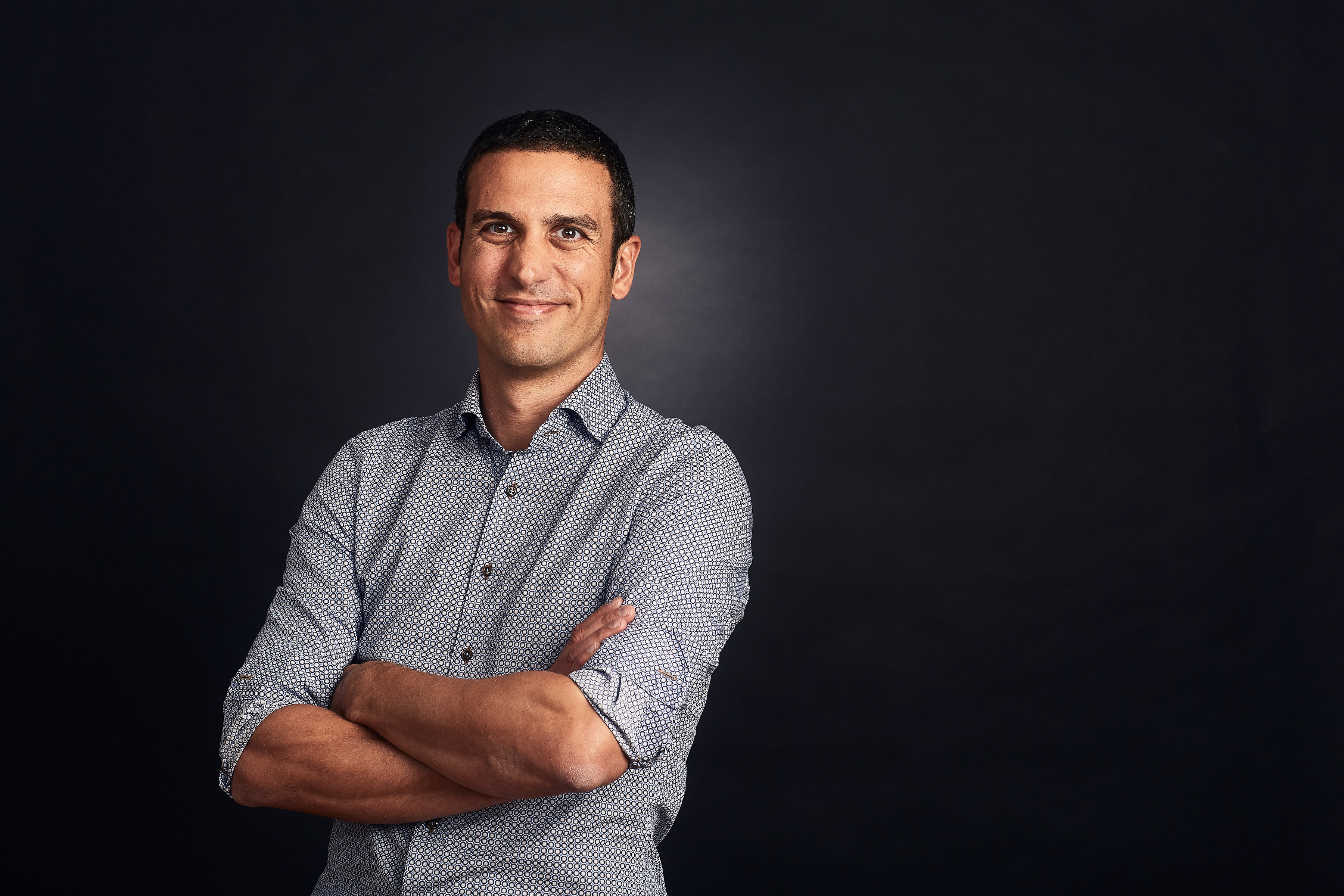
Francois Laborie is President of Cognite North America, overseeing Cognite’s expansion and operations in the U.S. and Canada. Francois has had an extensive career in the technology industry, serving in both research and executive roles. Before shifting to lead Cognite North America, Francois managed Cognite’s overall marketing activities, including product marketing and the Cognite partner network, as Chief Marketing Officer. He has master’s degrees in computer science and engineering from the National Institute of Applied Sciences and a Ph.D. from the Toulouse Computer Science Research Institute.
Recommended Reading
Matador Resources Declares Quarterly Dividend
2024-02-14 - Matador Resources will pay a $0.20 dividend on March 13 to shareholders of record by Feb. 23.
Matador Resources Announces Quarterly Cash Dividend
2024-04-18 - Matador Resources’ dividend is payable on June 7 to shareholders of record by May 17.
Magnolia Oil & Gas Hikes Quarterly Cash Dividend by 13%
2024-02-05 - Magnolia’s dividend will rise 13% to $0.13 per share, the company said.
CEO: Magnolia Hunting Giddings Bolt-ons that ‘Pack a Punch’ in ‘24
2024-02-16 - Magnolia Oil & Gas plans to boost production volumes in the single digits this year, with the majority of the growth coming from the Giddings Field.
Sherrill to Lead HEP’s Low Carbon Solutions Division
2024-02-06 - Richard Sherill will serve as president of Howard Energy Partners’ low carbon solutions division, while also serving on Talos Energy’s board.

